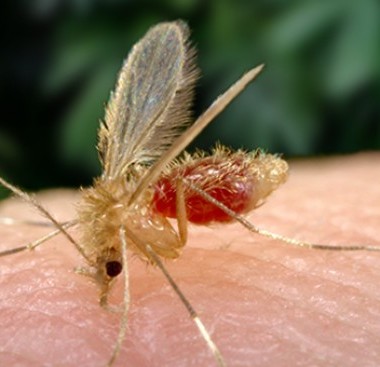DOG AND CAT BREEDS ARE IN PERIL IN EUROPE
By: Staff Date: 01/16/2012 Category: | Animal Rights Extremism |
If a group of radical activists in Europe have their way, more than 100 breeds of dogs and cats will go the way of the dodo. Advocates for the European Convention for the Protection of Pet Animals would eliminate any breed with a foreshortened muzzle, short legs, long ears, or folded skin as well as breeds with individuals that carry lethal gene factors, merle pattern, or deafness genes, or are giant or toy in stature. The council passed the convention in 1987 and clarified it with two resolutions in March 1995. Taken together, the resolutions will, if ratified by all parties
- Eliminate tail docking, ear cropping, debarking, declawing, and defanging
- Encourage breed associations to amend standards so that certain characteristics are eliminated; and
- If breed associations fail to comply, prohibit the breeding of any animal with a perceived defect.
History
The convention or treaty was written by delegates to the Council of Europe, a group of 40 nations working together on matters pertaining to a broad spectrum of issues, including culture, social and economic questions, and the environment. The council is separate from the European Union, a 15-nation coalition that determines policy matters aimed at securing democracy for its citizens.
The council writes treaties dealing with various issues, and member nations decide whether to agree to each treaty's provisions. Fifteen nations have agreed to the provisions of the pet protection treaty: Austria, Belgium, Cyprus, Czech Republic, Denmark, France, Germany, Greece, Italy, Luxembourg, The Netherlands, Norway, Portugal, Sweden, and Switzerland. Some nations chose to abide by some sections of the treaty and to ignore others; for example, Belgium, Denmark, Finland, Germany, and Portugal reserved the right to allow docking of tails. However, Germany is now considering a modified ban on tail docking.
Much of the convention on pet animals covers typical animal welfare issues but goes further than US legislatures and regulatory agencies by requiring
- permanent identification of all pet animals if deemed necessary by the individual country; and
- licensing and standards for boarding kennels operated for profit and for animal sanctuaries - including a prerequisite that the kennel or sanctuary operator have professional training or commensurate experience with animals; and banning
- so-called cosmetic surgeries;
- the keeping of wild animals as pets;
- the sale of any pet to a person less than 16 years of age without parental consent;
- training that is "detrimental" to the animal; and
- the use of pets in advertising, entertainment, or competition except under specified circumstances.
No more Great Danes or Basset Hounds
At its inception, the treaty sowed the seeds of disaster for purebred breeders with Chapter One, Article Five: "Any person who selects a pet animal for breeding shall be responsible for having regard to the anatomical, physiological and behavioral characteristics which are likely to put at risk the health and welfare of either the offspring or the female parent."
The 1995 resolution brought the fears to fruition by demanding that breed standards be rewritten to eliminate - by fiat if voluntary efforts fail - certain characteristics or potential genetic abnormalities. The resolution applies to traditionally cropped and docked breeds; breeds that are susceptible to hip dysplasia and other joint abnormalities; breeds with short legs and long bodies; giant breeds; toy breeds; hairless breeds; and more. The resolution encourages
- maximum and minimum heights and weights for giant breeds and toy breeds;
- maximum values for the proportion of height to length in long-bodied, short-legged breeds;
- limits to skull size and shape to avoid breathing and birthing problems;
- elimination of bowed legs and straight rears as breed characteristics;
- prevention of entropion, ectropion, and large eyes typical of some breeds;
- elimination of very long ears and skin folds; and
- discontinued breeding of breeds with lethal factors and recessive-defect genes, "dominant white" cats, merle factor dogs, and hairless breeds.
The list of affected breeds is staggering. It includes terriers, spaniels, several pointing breeds, Boxers, Dobermans, Miniature Pinschers, Great Danes, and all other cropped or docked breeds; Chinese Crested and Mexican Hairless dogs; Chinese Shar Pei, Bloodhounds, Basset Hounds, Scottish Fold cats and other breeds with skin folds; Dachshunds, Corgis, and other long, low breeds; Pugs, Bulldogs, Pekingese, Persian cats, and all other breeds with foreshortened muzzles; Newfoundlands, Great Pyrenees, Irish Wolfhounds, and all other giant breeds; Chihuahuas and other breeds with rounded skulls; Chow Chows, Finnish Spitz, Norwegian Buhund and other breeds that may lack rear angulation; and merle pattern Collies, Shetland Sheepdogs, Australian Cattle Dogs, and Australian Shepherds.
Some breeds face a double or triple whammy: Boxers make the list of cropped breeds, docked breeds, and brachycephalic breeds; Basset Hounds have skin folds, short legs, and long bodies; Cocker Spaniels have long ears and docked tails; Dachshunds are long, low, and carry the merle pattern gene; and Great Danes are giant dogs with cropped ears and the merle pattern
Implementation
Fifteen of the 40 nations in the Council of Europe have approved the treaty, and many have devised laws and regulations to implement its articles. As of the March 1994 Council of Europe meeting, the following enforcement provisions were in place:
- Denmark: animal welfare laws banning ear cropping and prohibiting tail docking of all but five breeds of hunting dogs.
- Finland: many of the provisions of the treaty implemented with plans to outlaw tail docking.
- Germany: animal welfare laws implemented most provisions of the treaty with reservations for the minimum age provision and the docking of tails. The German animal welfare law prohibited breeding that brings suffering to offspring, but it was poorly administered and planned for change.
- Sweden: a general act of Parliament prohibited surgeries for aesthetic purposes, but may make an exception for the German Shorthaired Pointer because of tail damage. Sweden regulated pet shops, banned aggressive pit bull terriers, planned to ban wolfdogs, and prohibited breeding dogs and cats with defects that could be passed to the offspring.
- Switzerland: prohibited many surgeries and regulated advertising, trading, and keeping of wild animals. Further regulations, including a ban on tail docking and restrictions on breeding, were under consideration.
- France: has implemented most of the treaty provisions with a national identification data base for dogs and cats, training programs for breeders, restrictions on the trade of wild animals as pets, and regulations for boarding kennels, sanctuaries, and grooming shops.
In 1996, the Nordic Kennel Union, a coalition of kennel clubs in Sweden, Norway, Denmark, and Finland said that it had "agreed on a program of action" to "look through all the breed standards and take action against phrases that might be negative in the perspective of health."
The NKU press release also said that the union "suggests a general writing added to all the FCI* Breed Standards containing exterior descriptions which might create health problems or suffering for dogs." Sweden's kennel club did not to wait for FCI; it decided to add the phrase "Exaggerations which may negatively affect the dog physically shall not be awarded either in the show ring or in breeding" to standards for breeds with very short muzzles, 'bad' knee or hind leg angulations, an 'abnormally' large head, loose skin, and eyes that are unprotected or have size, form, or placement that can lead to suffering.
Progress in the US
Could the European Convention for the Protection of Pets happen here? Although the US has a federal Animal Welfare Act, the government regulates only the conditions under which the animals must be raised and kept in commercial kennels, research facilities, and exhibits. Breeding ethics are the province of breeders and breed clubs and are jealously guarded from interference. Responsible breeders not only minimize the potential for genetic abnormalities, they raise money and participate in studies to find genetic markers for various diseases and to develop treatments and cures.
However, animal rights activists at state and national levels are attempting to force regulation of breeders through legislatures and the initiative process. They are backed by organizations such as the Association of Veterinarians for Animal Rights, Doris Day Animal League, Humane Society of the US, People for the Ethical Treatment of Animals, and others that denigrate purebred dogs as genetic nightmares and vilify breeders as vain and greedy animal exploiters.
No state has passed laws regulating breeders and breeding, but several communities have done so. Many of these proposals also contain mandatory spay and neuter provisions or impose penalties for keeping dogs intact. Some proposals require a breeding permit as well as an intact-dog license fee and limit the number of times a bitch can be bred or the number of litters that can be bred in a year.
Some states have passed "lemon laws" that hold the breeder responsible for a broad spectrum of problems that may befall a puppy - even problems that are hard to trace to breeder error or can just as easily be due to owner ignorance or carelessness. Lemon laws can easily be amended to tighten restrictions on breeders or be used to identify breeders as targets for further punitive legislation.
Animal cruelty bills are also being used to tighten the noose. A Georgia legislator proposed an animal cruelty bill this year that he said would outlaw ear cropping and tail docking. The language in that bill is comparable to the wording in animal bills in several states, bills that could be misused by humane agencies that consider cropping and docking to be cruel. And the American Animal Hospital Association has proposed a cropping and docking policy to the American Veterinary Medical Association that gives credence to the claims that the procedures are inhumane.
A major difference between the Council of Europe's international attempt to regulate pet breeding and the piecemeal efforts in the US is the use of sterilization to impact pet populations. The European treaty barely mentions spay and neuter surgeries and then only in conjunction with stray dogs. While US activists, humane societies, and veterinarians insist that pet sterilization is the only way to reduce dog and cat deaths in shelters, in some European countries, forced sterilization is considered as invasive as ear cropping and tail docking.
* Fédération Cynologique Internationale, the governing body for dog shows in European countries.
About The Author
All Authors Of This Article: | Norma Bennett Woolf |












